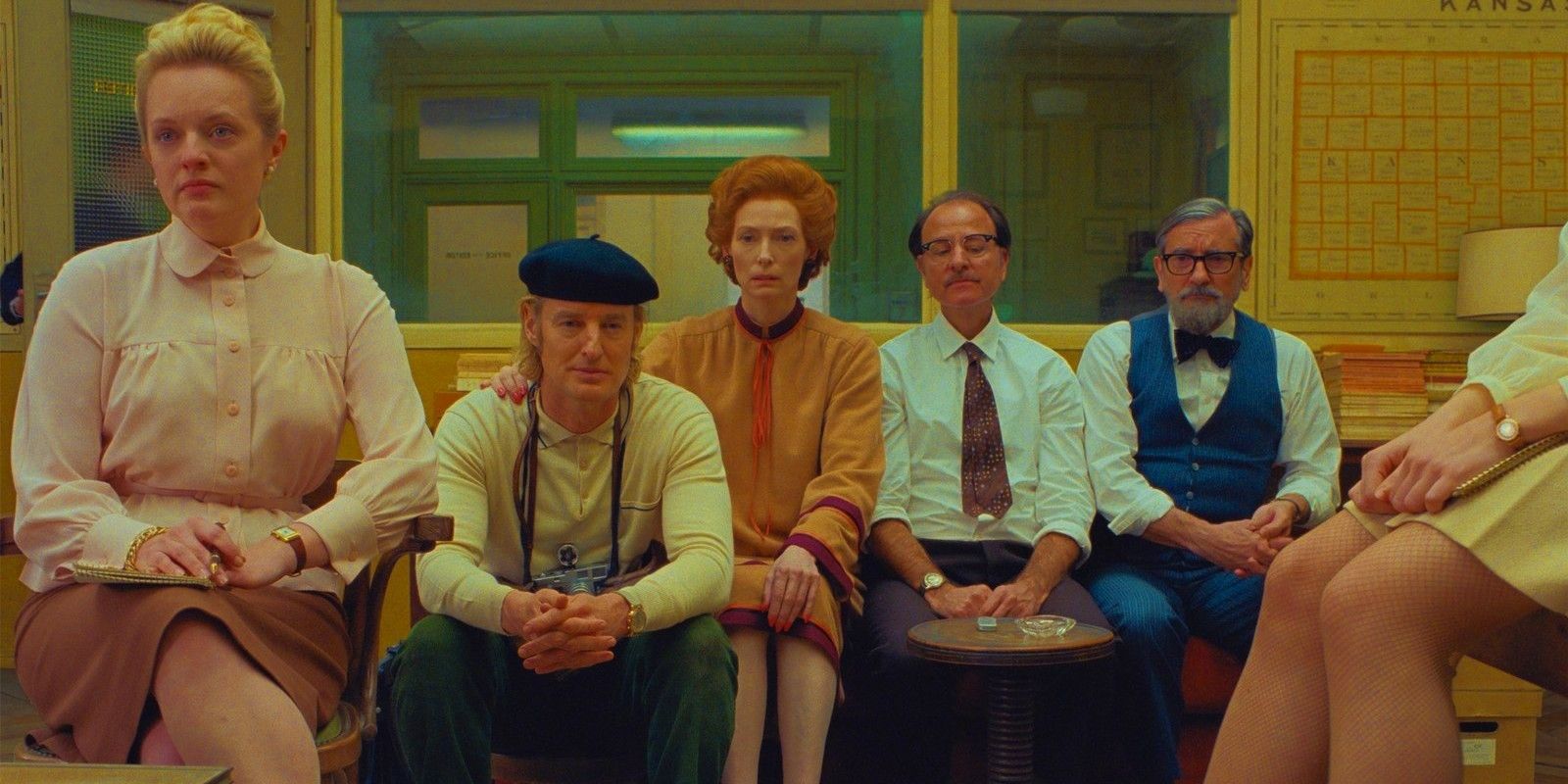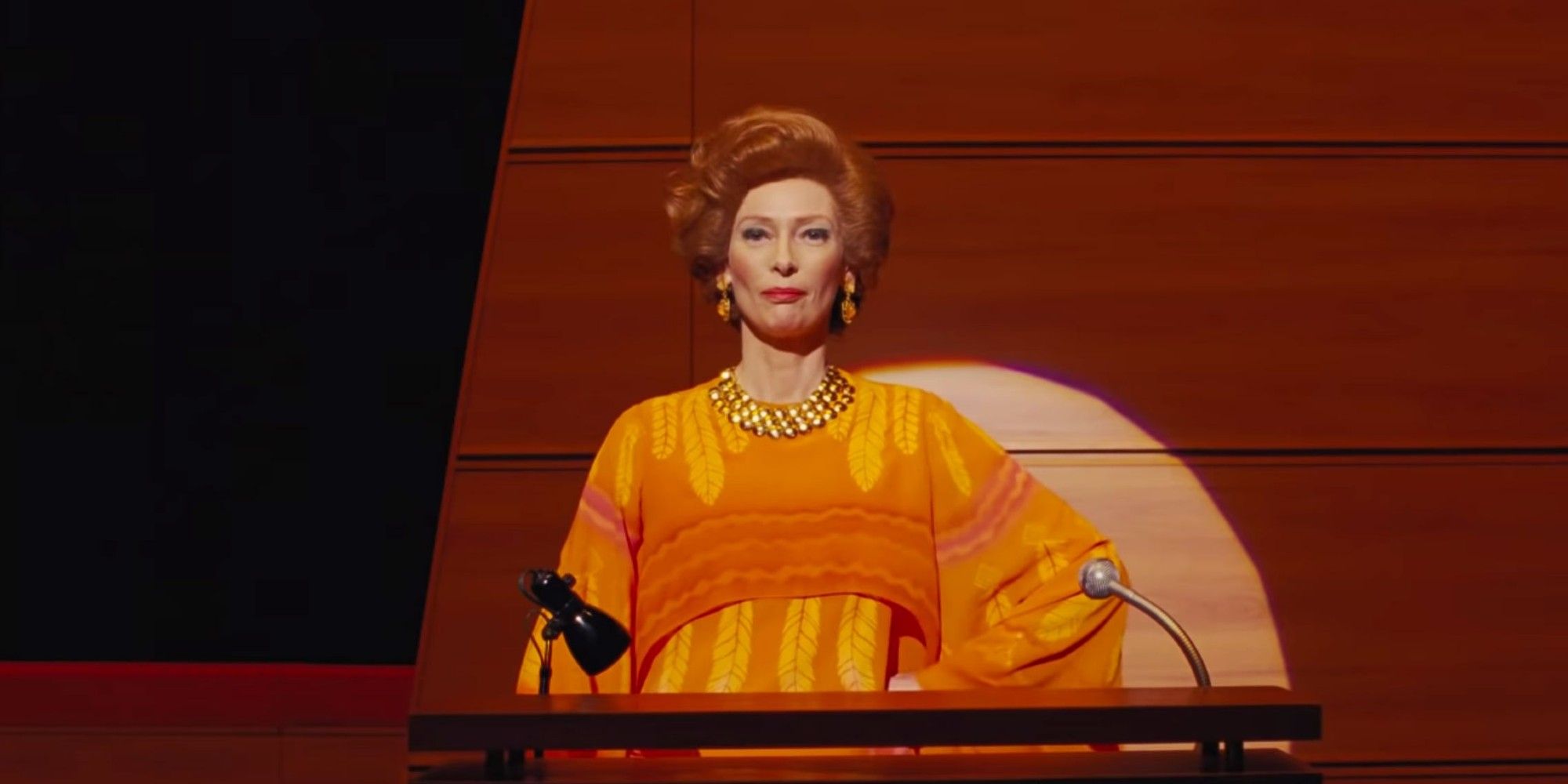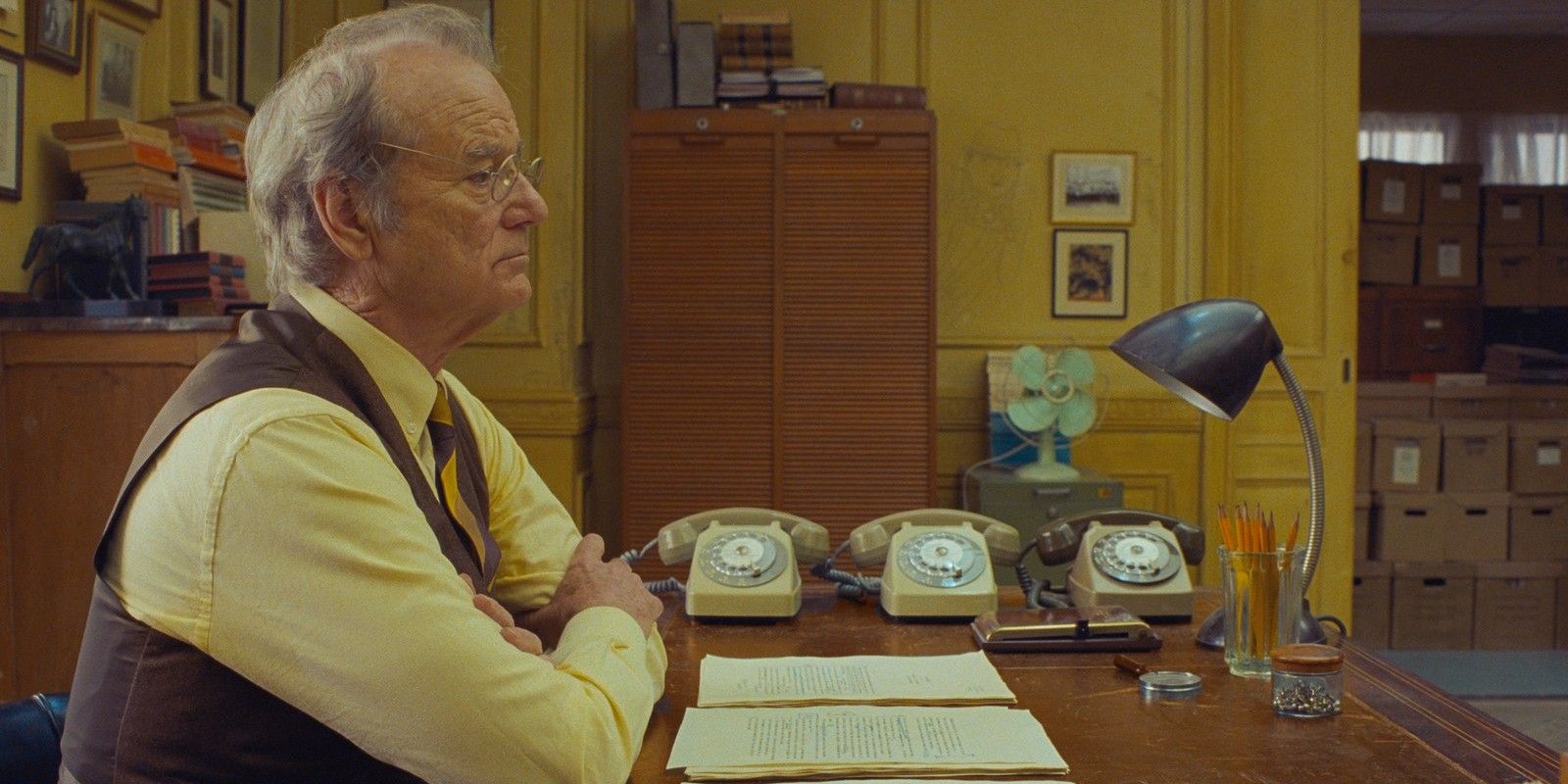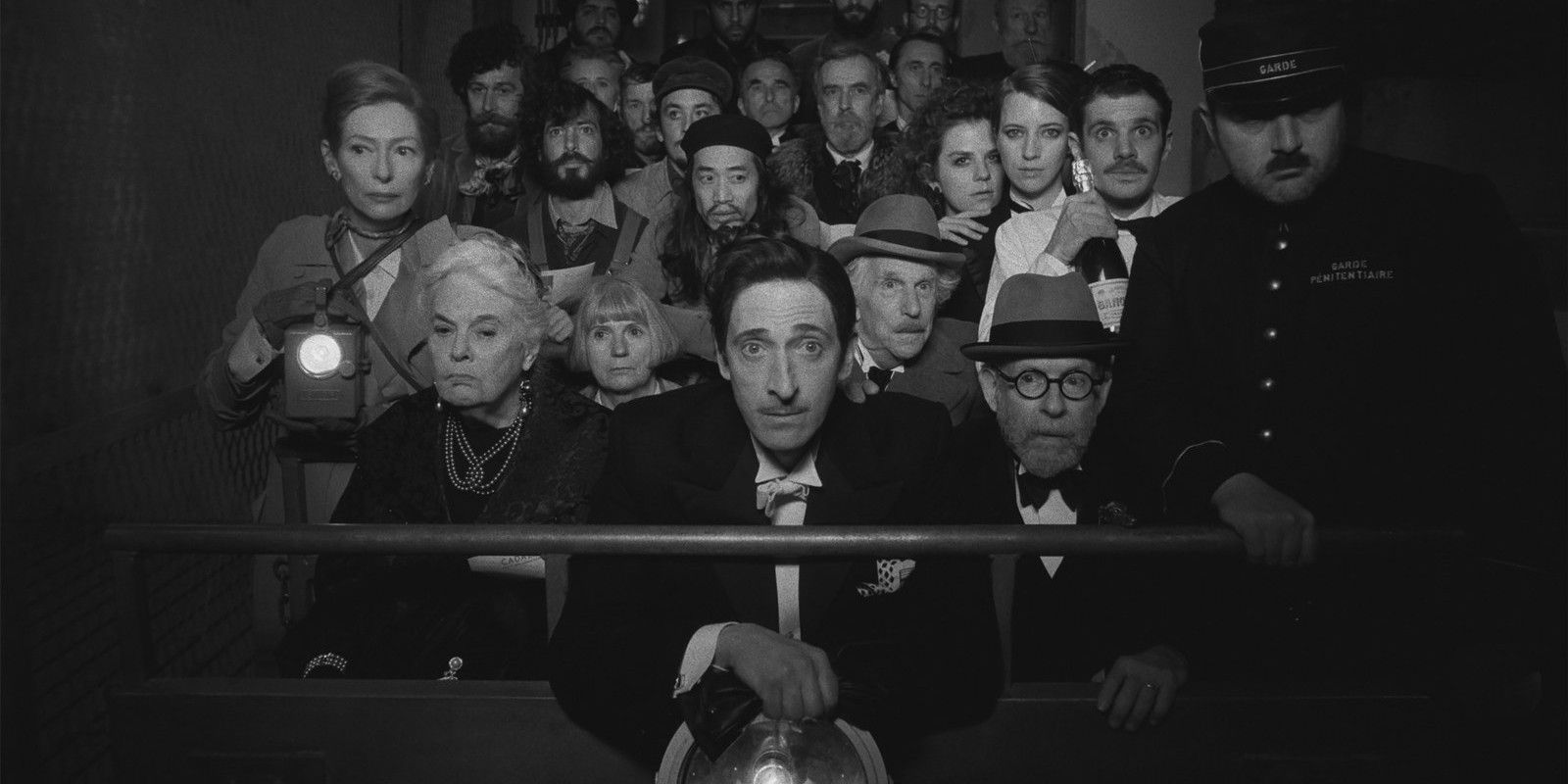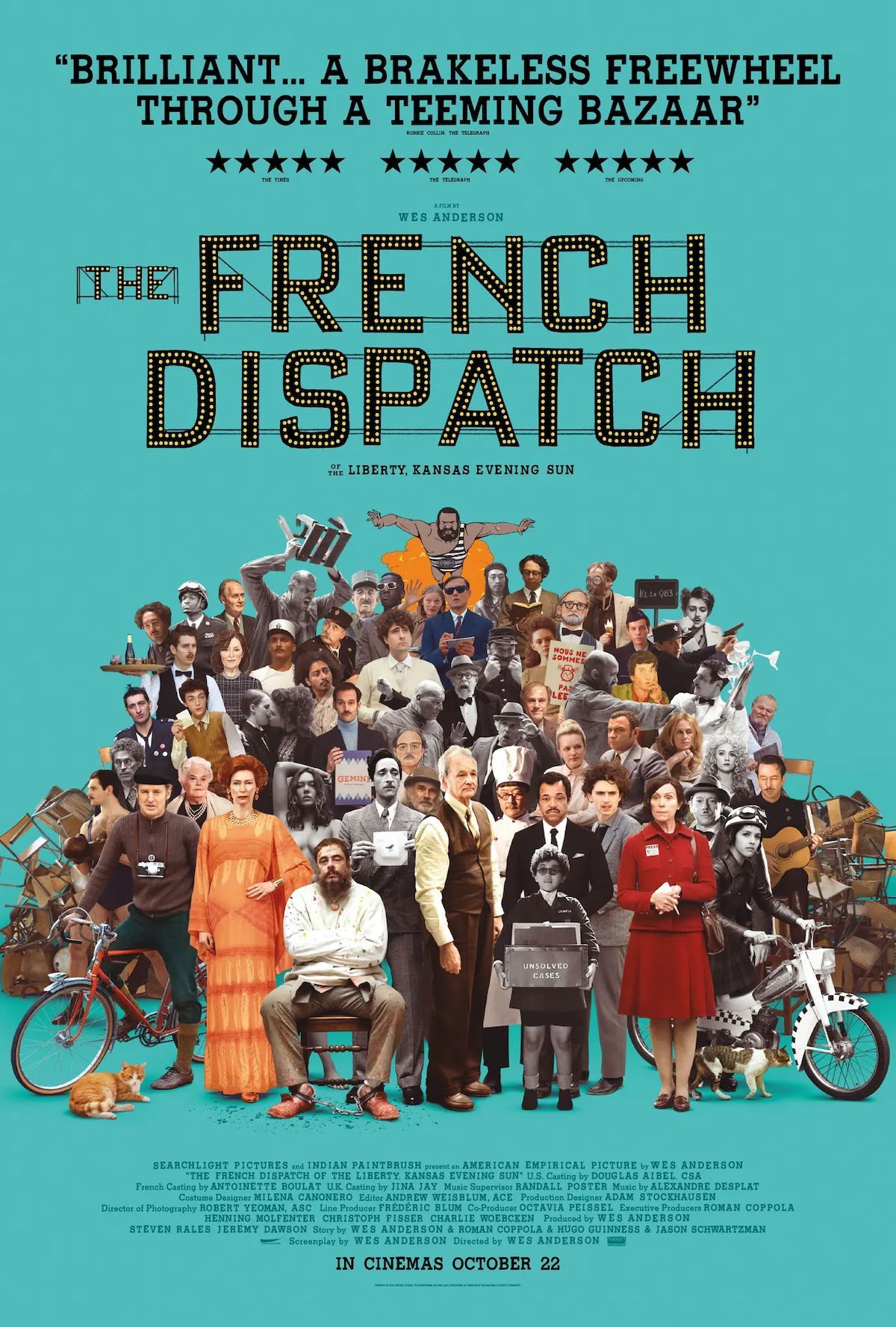Rena DeAngelo is the set decorator for The French Dispatch. Directed by Wes Anderson, the film is a love letter to journalism and those who pursue it. In typical Anderson fashion, the movie is a colorful and star-studded affair. The French Dispatch stars Timothée Chalamet, Frances McDormand, Owen Wilson, Bill Murray, Tilda Swinton, Benicio del Toro, and many, many more.
Screen Rant spoke with DeAngelo about her work on the film, including which story was her favorite to decorate, how difficult it was to do her job in France with limited knowledge of the language, and how she got into the Wes Anderson mindset.
Screen Rant: For our readers, I was wondering if it would be okay if you kind of talked me through what a set decorator does because I think it's so much more than one would typically think.
Rena DeAngelo: We are the ones that populate the set that the art department has built. Say we built the cafe, for instance, the bones of the bar are built. And then I come in and I bring in the tables and the chairs and the art that's on the wall and all the lights. Everything that's on the bar, all of the mirrors, all of the flooring - basically everything that is decorating.
I also work on - if I'm outside, I'm the one that brings in the garbage cans, whatever else is populating your street. The garbage if there's garbage. That sort of thing.
You have such a very varied portfolio. From the recent Gossip Girl reboot, The OA, Bridge of Spies. Where would you rank French Dispatch in terms of difficulty when it came to doing all of these things?
Rena DeAngelo: It was quite an undertaking. It was. It was so many sets - I think we had somewhere in the neighborhood of 150 sets to do and at any given time, we probably had eight of them going at once. I would say it was up in the top five.
And being in France, there was the language barrier. My French is not very good. But it was the most fun I've had in a really long time. Wes has a singular vision and bringing the storyboards that he had done alive, seeing them, standing in the middle of a Wes Anderson set every day. I mean, it's kind of a dream come true for a set decorator.
I was about to say because Wes has such a distinct aesthetic and he has a lot of frequent collaborators that he's been working with for years. But this is your first project with him, correct?
Rena DeAngelo: This is my first one, yeah. And I've known Adam [Stockhausen, production designer] for years - he did Grand Budapest [Hotel] and Moonrise [Kingdom] and Isle of Dogs. So Adam, and I have been working together for years. And he brought me on to this one and I'm glad that he did because I honestly can say I'm so proud of it. I just saw it at the film festival the other night. And it's a bombardment of amazing sets. I can't even believe it. Every time I watch it, I'm just like, I can't believe what we pulled off.
How did you prepare to work on that? Did you do a deep dive into Wes' filmography?
Rena DeAngelo: I have been a fan of Wes for years. And it's funny, I hadn't seen him in years. And I went to go see The Grand Budapest Hotel and I don't think I talked to him for two years. I was going to call him to congratulate him on that - it was the most beautiful thing I'd ever seen. And he happened to call me the next day, which was funny because he was asking me to do French Dispatch with him. And now we've been working together for a few years.
I've watched a lot of [Wes Anderson's films]. He gave me a refresher course on how to deal with - I mean, it's a very specific process you go through with Wes because he has the entire movie in his head. And he knows exactly what he wants, and you're trying to bring him what he wants on set. And I don't think anything could have prepared me for what it actually was. But I got used to it after a week or so. And then I just went through seeing the storyboard, seeing what the art department had come up with, and just actually being in France, and then getting on the land where we shot it. It just made it easier to see what he was thinking because the town itself was amazing. We couldn't have shot it anywhere else.
How do you approach working within such a distinct visual style versus working on a project where you would have more of a blank slate?
Rena DeAngelo: [Wes] gave us a list of French New Wave cinema to watch. I took into consideration the colors that he liked, the type of furniture that he liked, the loose attitude towards the year that something was supposed to be taking place in and, like we were making a documentary, if they'd be in 1968 if something from 1974 looks like it would work in this time period, we made it work because that's just the way his sets are.
You have to look at it with a completely different eye. And then there's a whole way you start seeing the world in Wes vision where you're just looking at things in symmetry and I started taking photos in a Wes frame and I still can't get my head out of it - you can't once you once start seeing things like that. You never can get past that. Anytime I see anything. That's the color green that he loves. Like, I want to buy it. So yeah, I mean it's a whole different mindset. And it was an interesting way to work because it was like nothing I'd ever done before.
You also have those three distinct stories in The French Dispatch.
Rena DeAngelo: Yeah, they had nothing to do with one another. So it was like we were making almost five movies at the same time. And everything was a completely different vibe. It was a totally different color story. It was a completely different year. So I was shopping for all of it at the same time.
And we were shooting it in sequence. My mind was in 50 different places all at once. And I had a great group of assistants. Thankfully they did the translating. They told me where I needed to go. They were incredible. But yeah, it was a memorable experience.
Did you have a favorite story to work on in the film?
Rena DeAngelo: I really liked the Timothée Chalamet and Frances McDormand one. That one was really fun because it was - I love the time period. I loved all the references. I love the old cafes. I really liked doing the street where we built the barricades out of chairs, school chairs, and gloves, and typewriters. It was just so much fun.
Beyond Wes' distinct aesthetic, do you search for a design through-line that helps you stay consistent through each distinct story?
Rena DeAngelo: I think it's the Wes aesthetic that you want to stay true to regardless of what year or what story you're doing. He always has a very similar way of seeing things. It's really hard to explain because we were also doing things in black and white and color at the same time. It's a whole other mind-bending notion to see how you can make like the [art] gallery with everything that I had in that set that needed to be seen in black and white.
But when it's in black and white, it can't look like a big muddy mess. So I had to have all the colors work in concert, but also work in real life so that when the actors walked in they would think that this set decorator wasn't a complete crazy person matching like green and purple and all the different colors together.
Another interesting part of the film is there are some sequences that are presented in this play-like, theatrical format. Did that change how you approached it?
Rena DeAngelo: I did a few plays when I was very young when I first started out, but that's about it. So just like anything else in this business, you kind of learn what your task is at hand and you go do your research. [Wes] says we're going to do a play, we go in, and we started doing some research with theater design.
So you just look at theater design and then you turn your brain to theater design for a minute, and you get that done, and then you move it back to the movies, and then you back on to the way you normally would do a film.
You mentioned earlier, Wes gives you these storyboards that then you have to go out and create the scenes in real life. What is that like? Do you just go shopping locally? What is that process like for you?
Rena DeAngelo: We started prepping to film in Paris. We were going to flea markets and then we left Paris. I had a pretty good idea of what I was looking for, for all of the different things. I had to do all of the different offices, every set that was in the movie. So I would just get to these flea markets and just start grabbing as much stuff as I could find and everything would work. And then we would sort it out once we got back to the shop. That's the way you do all movies. It was just a little more complicated because I was in France.
We were at the mercy of the being on the lam. I found a really great estate salesman who had a huge warehouse that was just filled with every period piece of furniture you could think of.

